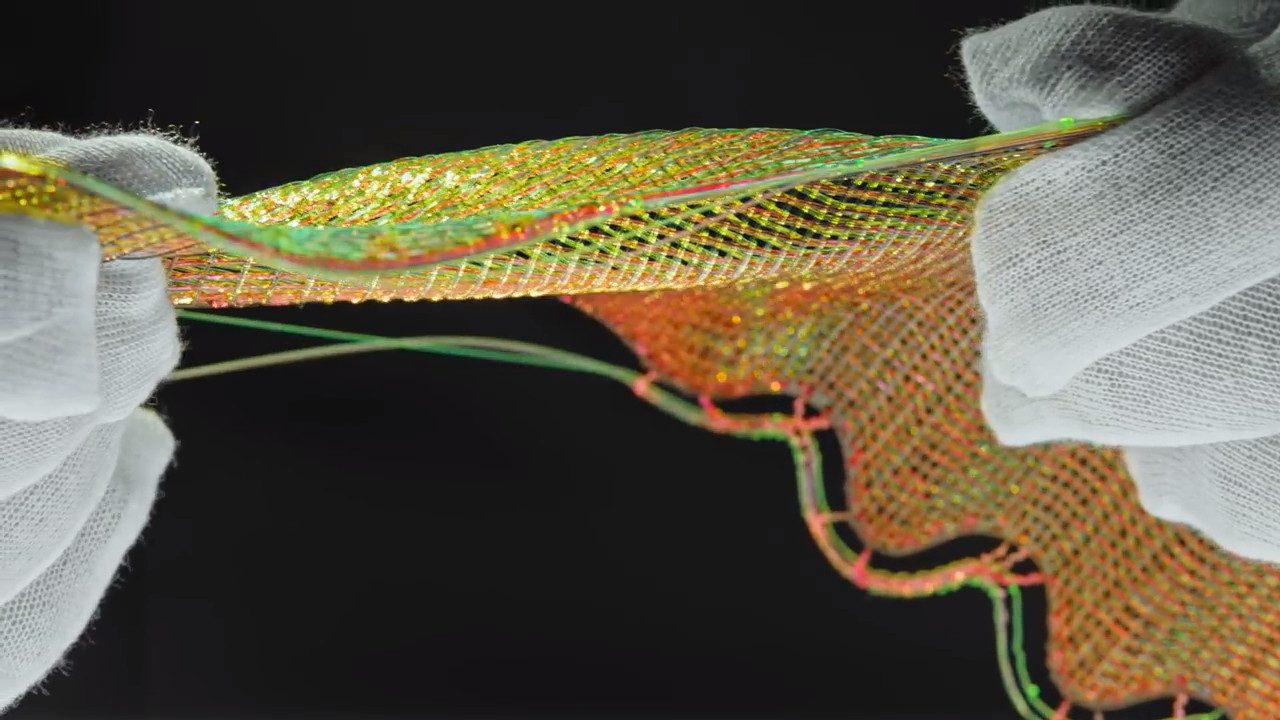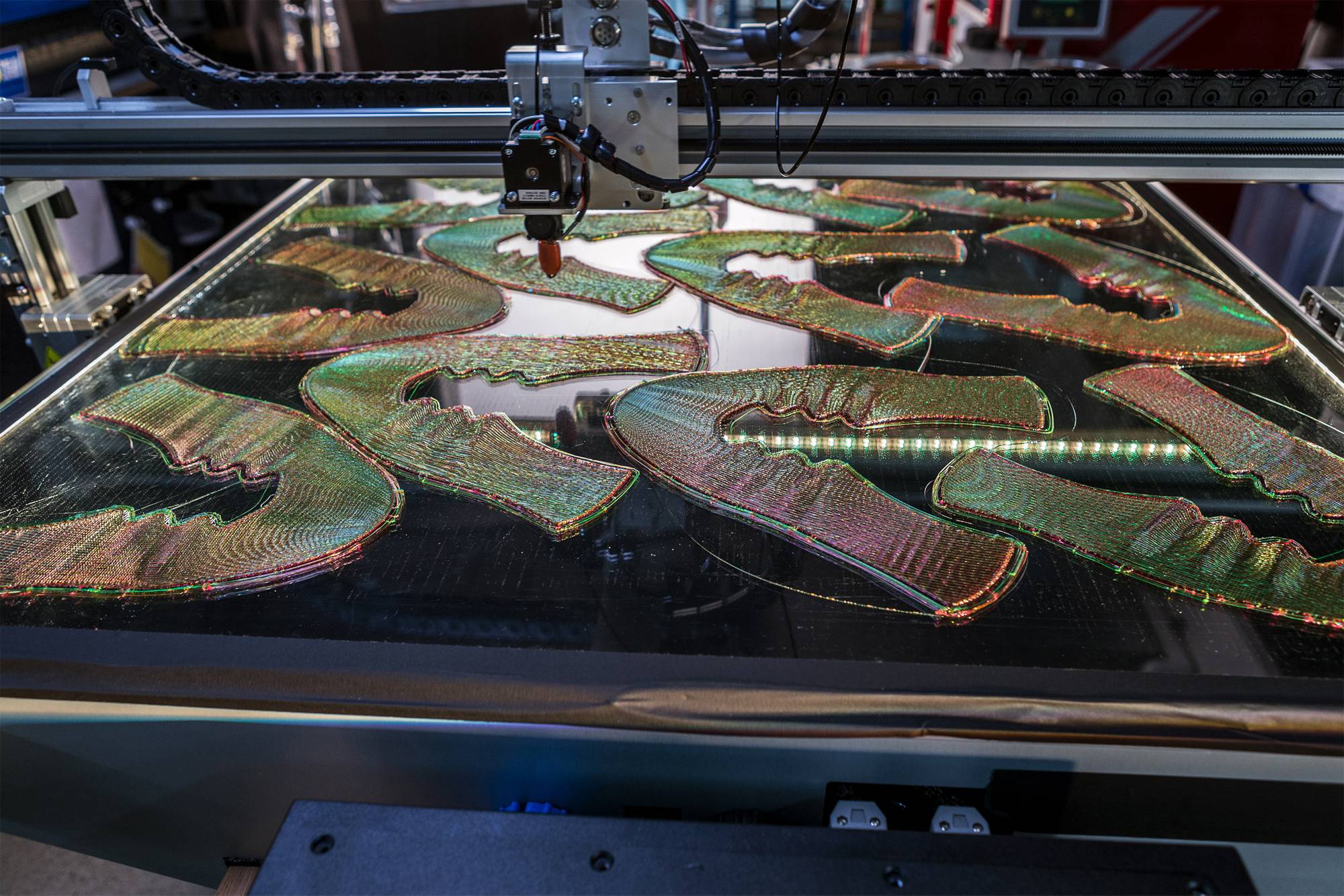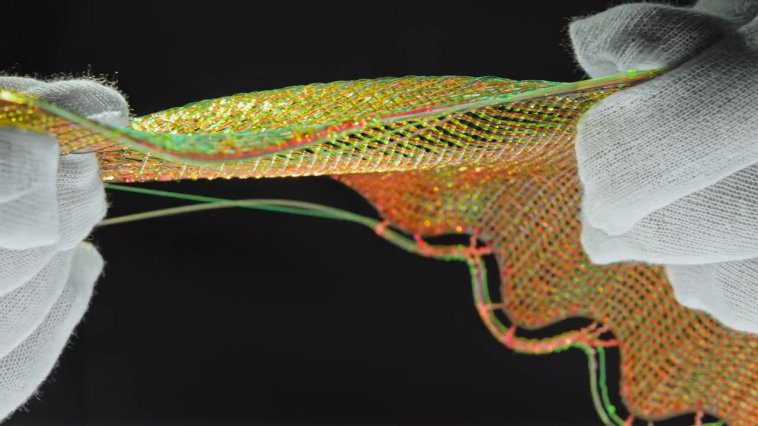Nike has just unveiled the Vaporfly Elite Flyprint, a new 3D printed running shoe that is lightweight, flexible and comfortable. The material used to make this sneaker was designed in collaboration with runner Eliud Kipchoge, who ran the world’s fastest marathon of all time.
As advancements in 3D printing have hit the ground running over recent years, some of the world’s largest athletic apparel companies are utilizing the technology to create groundbreaking footwear. Nike is the latest notable name to unveil sneakers that are produced with 3D printed materials.
The new Vaporfly Elite Flyprint is a running shoe that is lightweight, flexible, and comfortable. The textile used for the knitting of the sneakers is made from TPU filament. The material looks like vibrant, layered wires that are unwound and melted together.
Nike’s latest shoe is a specialized edition of the Zoom Vaporfly Elite 4%, which was worn by runner Eliud Kipchoge when he ran the fastest-ever marathon time at the company’s Breaking2 event in September 2017. Kipchoge, a Kenyan long distance runner, collaborated with Nike to develop the innovative 3D printed textile.

Nike Flyprint: Using 3D Printing to Create More Comfortable Sneakers
No matter how comfortable your sneakers may be, running can be a painful experience on your feet. The Nike Vaporfly Elite Flyprint aims to solve this issue. The shoe is 6 percent lighter than the previous edition worn by Kipchoge when he broke the world record for fastest marathon time.
The wave-like lines at the top of the foot are also closer together, making the shoes more breathable and porous, allowing water to efficiently drain out. It took Nike only four months to design, prototype, and produce the final model of the Flyprint sneakers. In comparison, it usually takes nine months to one year to launch a new shoe.
Nike is using FDM 3D printing with production-ready TPU materials, along with a proprietary technique that directs the printer on how to lay down the colorful threads. However, there’s no word on what 3D printer is responsible for manufacturing the Flyprint shoes. It’s worth mentioning that, in the past, Nike collaborated with Prodways to produce 3D printed shoes with TPU material.

The computational design process allows Nike to scale the Flyprint shoe sizes for each runner while also maintaining the crucial ratio of material to negative space.
The 3D printed footwear movement first hit the mainstream with the Adidas Futurecraft, a sleek athletic shoe with a 3D printed midsole. Thanks to the groundbreaking CLIP technology provided by the 3D printer manufacturer Carbon, Adidas is able to mass produce the sneakers, aiming to deliver 100,000 pairs to customers by the end of the year.
But unlike the Adidas Futurecraft, the Vaporfly Elite Flyprint is strictly produced for elite runners like Kipchoge. A small number will be made available at an upcoming event in London, and also gifted to various Nike runners.
Although you might not be able to get your hands on these fly kicks unless you’re an Olympic-level runner, rest assured that the development of the Flyprint material suggests a bright future for 3D printing technology in athletic footwear production.
Source: Nike
Website: LINK


